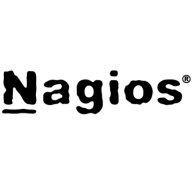

Datadog and Nagios Core compete in the monitoring and observability category. Based on comprehensive integration and user-friendly experience, Datadog appears to have an edge.
Features: Datadog offers extensive integration capabilities, shareable dashboards, and advanced alert mechanisms making it highly suitable for complex cloud environments. Nagios Core, while not as polished, provides significant customization options and excels in network and infrastructure monitoring for on-premises setups.
Room for Improvement: Datadog could enhance dashboard performance, API consistency, and pricing transparency. Nagios Core would benefit from a modernized interface and more robust configuration tools to align with current standards.
Ease of Deployment and Customer Service: Datadog provides robust support for cloud deployments and has generally good customer service, though response times can vary. Nagios Core is mainly on-premises, requiring more internal expertise, and a more streamlined support structure would enhance its offering.
Pricing and ROI: Datadog's complex pricing can escalate with larger deployments, yet many users find the features justify the cost. Nagios Core, with its open-source model, offers a cost-effective solution, mainly incurring costs through customization rather than licensing, which is appealing for budget-conscious environments.
The solution is scalable.
I tried many other solutions at work, however, in terms of Nagios, I haven't seen any disruption or downtime.
In future updates, I would like to see AI features included in Datadog for monitoring AI spend and usage to make the product more versatile and appealing for the customer.
The documentation is adequate, but team members coming into a project could benefit from more guided, interactive tutorials, ideally leveraging real-world data.
There should be a clearer view of the expenses.
The setup cost for Datadog is more than $100.
Our architecture is written in several languages, and one area where Datadog particularly shines is in providing first-class support for a multitude of programming languages.
The technology itself is generally very useful.
You can monitor anything.
| Product | Market Share (%) |
|---|---|
| Datadog | 3.1% |
| Nagios Core | 2.5% |
| Other | 94.4% |


| Company Size | Count |
|---|---|
| Small Business | 78 |
| Midsize Enterprise | 42 |
| Large Enterprise | 82 |
| Company Size | Count |
|---|---|
| Small Business | 20 |
| Midsize Enterprise | 11 |
| Large Enterprise | 22 |
Datadog integrates extensive monitoring solutions with features like customizable dashboards and real-time alerting, supporting efficient system management. Its seamless integration capabilities with tools like AWS and Slack make it a critical part of cloud infrastructure monitoring.
Datadog offers centralized logging and monitoring, making troubleshooting fast and efficient. It facilitates performance tracking in cloud environments such as AWS and Azure, utilizing tools like EC2 and APM for service management. Custom metrics and alerts improve the ability to respond to issues swiftly, while real-time tools enhance system responsiveness. However, users express the need for improved query performance, a more intuitive UI, and increased integration capabilities. Concerns about the pricing model's complexity have led to calls for greater transparency and control, and additional advanced customization options are sought. Datadog's implementation requires attention to these aspects, with enhanced documentation and onboarding recommended to reduce the learning curve.
What are Datadog's Key Features?In industries like finance and technology, Datadog is implemented for its monitoring capabilities across cloud architectures. Its ability to aggregate logs and provide a unified view enhances reliability in environments demanding high performance. By leveraging real-time insights and integration with platforms like AWS and Azure, organizations in these sectors efficiently manage their cloud infrastructures, ensuring optimal performance and proactive issue resolution.
This is IT infrastructure monitoring's industry-standard, open-source core. Free without professional support services.
We monitor all Network Monitoring Software reviews to prevent fraudulent reviews and keep review quality high. We do not post reviews by company employees or direct competitors. We validate each review for authenticity via cross-reference with LinkedIn, and personal follow-up with the reviewer when necessary.